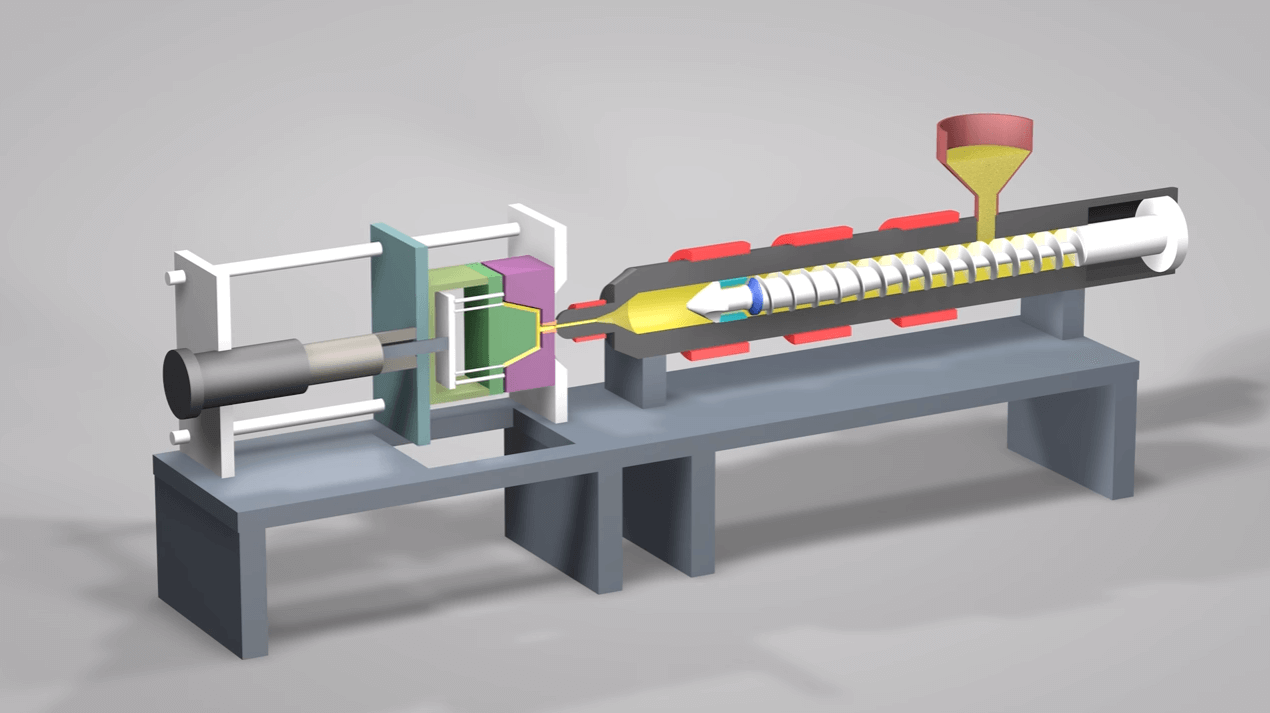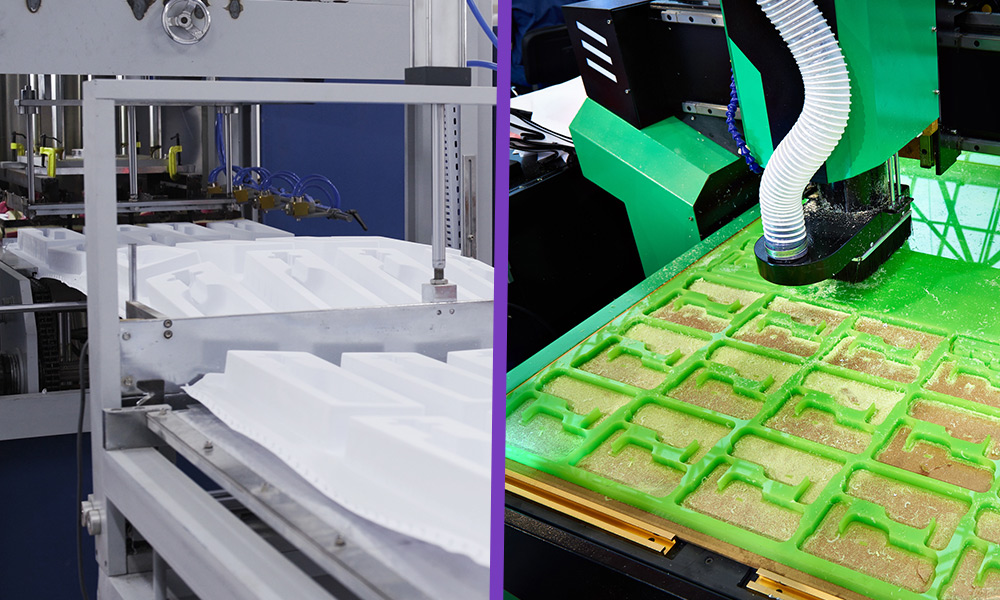Understanding the Basics of Plastic Injection Molding Procedures
Plastic shot molding works as a cornerstone of contemporary production, giving a methodical method to creating intricate parts with precision. This process not only incorporates the essential steps of melting and injecting products right into mold and mildews but likewise includes a nuanced understanding of different affecting variables, such as temperature level and stress. As industries increasingly demand effectiveness and high quality, the details of this technique become more vital. Checking out these necessary components can disclose just how even small modifications can cause considerable enhancements in production outcomes, raising questions about the possibility for technology in this well-known procedure.
What Is Plastic Shot Molding?
Plastic shot molding is an extensively used production process that changes thermoplastic and thermosetting materials into specific and complicated forms. This technique is preferred for its ability to create high quantities of identical get rid of outstanding accuracy, making it a crucial method in different sectors, including vehicle, customer goods, and medical tools.
The process includes melting the picked plastic material and infusing it into a mold under high stress. The mold and mildew, designed to the specs of the preferred component, permits the liquified plastic to take shape as it strengthens and cools down. As soon as the product has solidified, the mold and mildew is opened up, and the finished part is expelled.
Plastic injection molding provides a number of benefits, consisting of reduced waste, consistency in production, and the ability to integrate detailed layouts that might be testing with various other manufacturing methods. Additionally, it supports a broad variety of materials, each offering distinct homes that can be tailored for certain applications. As markets remain to innovate, plastic injection molding remains at the forefront, allowing the development of advanced products that fulfill advancing customer needs.
The Injection Molding Process
The shot molding procedure is an innovative method that involves several key phases to generate top notch plastic parts. At first, plastic pellets are fed into a heated barrel where they are merged a viscous liquid. This molten plastic is then infused under high pressure right into a precision-engineered mold and mildew, which shapes the product right into the desired form.
As soon as the mold and mildew is filled, the plastic is allowed to cool down and strengthen, taking the shape of the mold tooth cavity. Cooling time is crucial, as it affects the cycle time and the last homes of the molded component. After adequate air conditioning, the mold opens up, and the completed component is expelled using ejector pins.

Materials Made Use Of in Injection Molding
Different materials can be utilized in the injection molding process, each offering one-of-a-kind residential properties that satisfy certain applications. One of the most frequently made use of products consist of thermoplastics, thermosetting plastics, and elastomers.

Thermosetting plastics, like epoxy and phenolic resins, undergo a chemical modification throughout the treating process, leading to an inflexible, inflexible structure. These materials are ideal for applications needing high heat resistance and structural honesty, typically made use of in electric insulators and automotive parts.
Elastomers, consisting of silicone and rubber-based products, provide flexibility and durability. Their one-of-a-kind properties make them suitable for applications that require flexibility, such as seals and gaskets.
Additionally, specialty materials like bio-based plastics and compounds are obtaining grip for their ecological advantages and enhanced performance qualities, expanding the extent of shot molding applications in numerous sectors. Understanding the residential properties of these products is important for selecting the proper kind for particular tasks.
Advantages of Injection Molding
Injection molding stands apart site link as a highly efficient manufacturing process that offers numerous benefits for generating complicated get rid of precision. One of the most substantial advantages is the capability to create elaborate designs that would certainly be impossible or challenging to attain with various other techniques (Plastic Injection Molding). The process allows for limited resistances and comprehensive features, making sure top quality components
In addition, shot molding is known for its quick production capabilities, making it an ideal selection for high-volume manufacturing. As soon as the mold and mildew is created, components can be created quickly, minimizing lead times and raising general productivity. This performance not only reduces manufacturing prices but additionally supplies a competitive side in the marketplace.
The adaptability of materials utilized in injection molding additionally enhances its charm. A wide variety of thermoplastics and thermosetting polymers can be employed, enabling manufacturers to choose products that best fulfill their specific demands, consisting of warm, toughness, and flexibility resistance.
Furthermore, the procedure decreases waste, as excess material can typically be reused and recycled. This sustainability aspect adds to a minimized environmental effect, making shot molding a liable production choice. In general, the advantages of shot molding make it a recommended approach for many industries.
Aspects Influencing Item Top Quality
While numerous elements can influence product high quality in injection molding, comprehending these components is essential for attaining optimal outcomes. Key facets consist of product selection, processing criteria, and mold and mildew design.
Material choice plays an essential role, as various polymers show one-of-a-kind properties that affect flowability, strength, and thermal security. Poor product option can cause flaws such as warping or incomplete filling.
Handling criteria, consisting of temperature level, cycle, and stress time, should be thoroughly regulated. Variants in these settings can result in incongruities partly dimensions and surface coating. Exceedingly high temperatures might cause degradation of the polymer, while insufficient stress can result in short shots.
Mold and mildew style is similarly essential, as it figures out the flow of the molten visit our website plastic and the cooling process. Badly created mold and mildews might lead to uneven cooling prices, leading to dimensional mistakes and recurring stresses.

Final Thought
Finally, plastic injection molding acts as an important production procedure that allows the effective manufacturing of top notch elements. Proficiency of the shot molding procedure, consisting of the understanding of materials and the influence of various factors on item top quality, is crucial for attaining optimum outcomes. The advantages of this method, such as cost-effectiveness and design adaptability, additional highlight its significance throughout numerous markets, solidifying its status as a recommended option for high-volume production.
Plastic shot molding offers as a foundation of modern production, offering a methodical technique to generating complicated parts with precision.Plastic shot molding supplies a number of benefits, consisting of why not look here decreased waste, uniformity in production, and the capability to incorporate detailed styles that might be testing with other manufacturing techniques (Plastic Injection Molding). As industries proceed to innovate, plastic shot molding stays at the center, allowing the development of innovative products that satisfy developing customer demands
The shot molding process is an innovative technique that entails several vital stages to produce top notch plastic elements.In verdict, plastic injection molding offers as a vital production process that allows the efficient production of high-grade components.